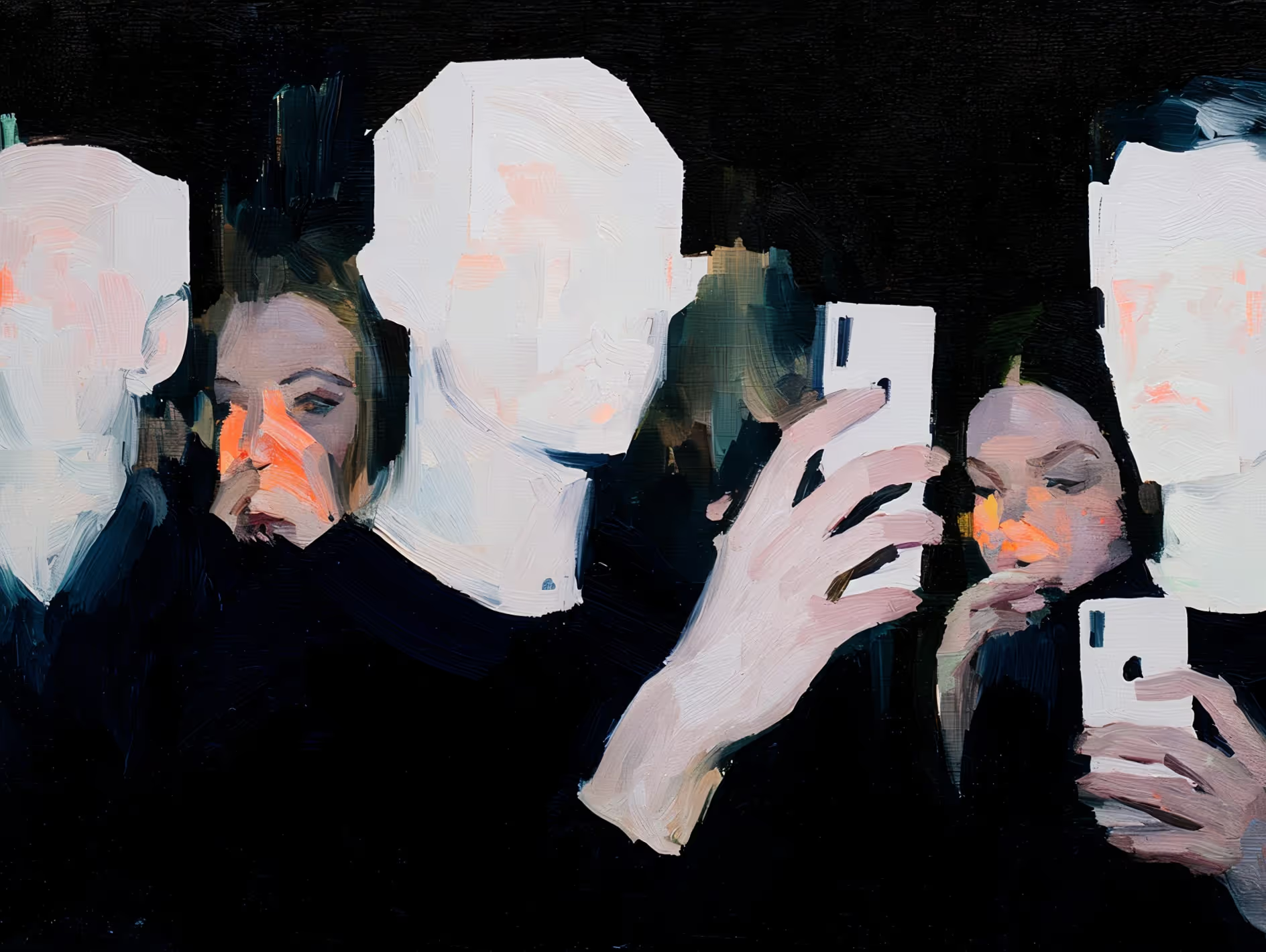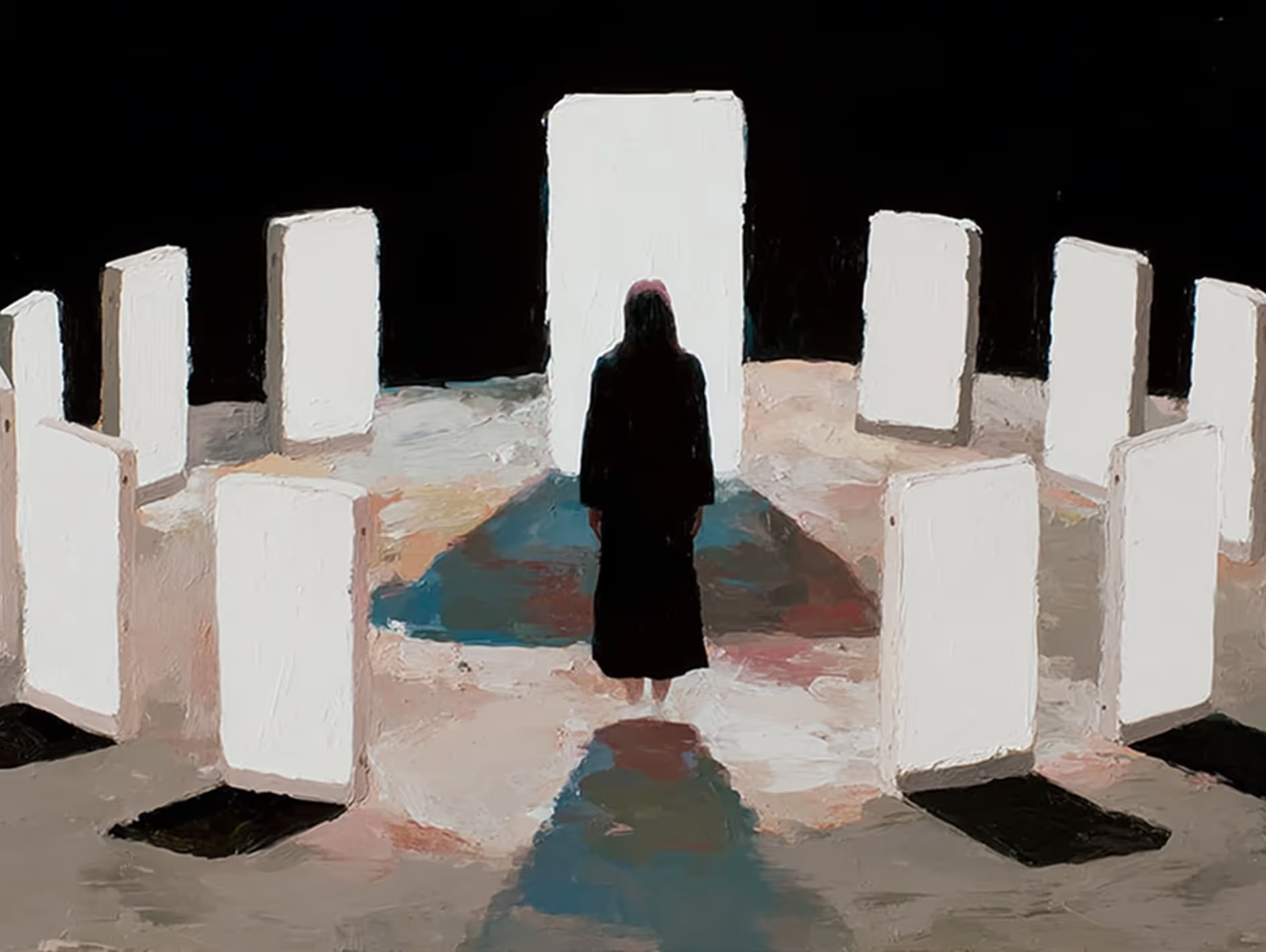
JOIN US (ONLINE): Cults and Social Media

We all know what a cult looks like: flowing robes, some light chanting, scattered skulls, unsettling animal masks, a concerning amount of candles if you’re familiar with fire codes, crowns of soft meats, and maybe a blood sacrifice or two.
You’d definitely know if you were in a cult, because of all the trouble with the local raccoon population and the soft meat crowns. You’re smart, and only stupid people get trapped in cults.
Right?
I mean, it’s not like you wouldn’t notice if you weren’t following one on social media. If they slid into your DMs. If everything they said made a lot of sense to you and there wasn’t a single meat crown in sight.
Yet.

We Are Definitely Not a Cult
We can get anything we want online now, so why not cults? Existing cults can use The Almighty Algorithm to recruit new followers, finding their way onto timelines via adjacent topics. If someone’s really into wellness, a little cultic pseudoscience might be hard to miss at first.
New cults can also spring up out of the digital landscape. Some are more visible, posting about themselves on mainstream platforms like Instagram or TikTok while others stick to private channels like Telegram or Discord, where it’s harder to find them and track their plans and activities.
The first rule of cults is that they’re never going to admit to being one. It’s just a group of people with similar interests, banding together. All they want is a better life and maybe it just makes sense to pool their resources, you know? Just like that compound you always joke you want to start with your friends! (Sometimes what starts as a joke becomes terrifyingly real, as we’ll find out later. No, I am not talking about your brunch group’s dream of owning a plot of land and a bunch of tiny homes.)
The public-facing language cults use is always vague, welcoming, and intended to make you feel ✨special✨that their message found you. This TikTok series from creator Caroline, parodying a cultish style of presentation, really nails it. It’s clear from the hashtags that it’s meant to riff off of religious groups like Scientology and some fundamentalist Christian sects. Cults with a religious focus are the stereotype most people think of — a charismatic leader preparing their flock for an approaching apocalypse or alien visitation. They might start relatively harmless — a group feeling alienated from their church and interested in homesteading, for example — but can evolve into something that causes real social harm.
Religious cults aren’t the only flavor lurking online, though. A cult can be difficult to define since it can exist in several overlapping categories (like religion, doomsday, sex, and politics), but some researchers organize online cults into three different categories:
- “Cultic” Religious Groups: These can be established offline religious groups moving into online spaces, or new ones growing out of them.
- Online Cultic Milieus: Think of places online that work to recruit lonely misfits exploring alternatives to mainstream “knowledge” and lifestyles; they’re not necessarily harmful, but can become problematic given enough time and isolation (like QAnon).
- Cultic Fandoms: There’s nothing wrong with a very intense, specific interest until it starts asking you to commit copycat violent crimes in the style of your fandom’s object of adoration (like Columbine or Ted Kaczynski).
Obviously, not everyone who does some edgy trolling online or is fascinated by a serial killer is going to escalate that into extremist violent acts. The trouble is that online communities are the perfect place for lonely, vulnerable people to be identified, love-bombed, and brought into the fold of a group that ultimately does not have that individual’s best interests in mind.

We Don’t Bite (at First)
How do you know if a group is a community vs a cult?
The lines can be blurry; does there have to be chanting, or is it enough to be pressured to drop your friend who asks all those pesky questions like “Why are you suddenly so into playlists full of speaking in tongues?” or “I think that neat accounting trick from your new friends that you’re describing is actually tax fraud?”.
One criterion is the BITE model, developed by former cult member Dr. Steven Hassan, breaking down the different areas of control cults use on their members:

Behavior control
You should really wear this robe, it looks so much better on you than your regular clothes! Also, we really think you should move into the Collective House and unburden yourself of your money and disapproving spouse. (Don’t worry, we’d never ask you to do murders!!!)

Information control
“They” (aka the mainstream media) are lying to you, so all you need to read from now on is our very sexy and extremely accurate cult pamphlet!

Thought control
Your secret name is Starshine, and any questions about Our Guide (who is definitely NOT our leader) are explicitly forbidden. She only wants your love!!

Emotional control
Any problems you have are your own fault, never that of The Collective or Our Guide, and you should never feel any feelings that have not been explicitly approved by us.
Cults use tactics like sleep deprivation and financial dependence to keep members in the group, too tired to think critically and too broke to leave — especially if they’ve been successfully isolated from their friends and family and quit their outside jobs.
Online cults might not be able to invite you to live in their weird decaying murder mansion, but they can hang out in regular forums looking for vulnerable people to invite into their worldview. Particularly kids like Elliott, feeling lonely at a difficult time in their lives.
These groups pretend to share common interests, making targets feel seen and appreciated, even loved. Then they start on the programming: sending them to “gore sites” (exactly what it sounds like) to desensitize them before asking them to harm themselves and send proof. That proof — photos or videos of symbols cut into their skin, or acts of violence done to family pets — is used as extortion to incentivize greater acts of violence. More self-harm, fully nude photos. It escalates until it feels impossible to leave.
What’s the goal? For groups like 764 or the Order of Nine Angles, it’s not in service of some higher, twisted calling. It’s because nothing matters.
It’s nihilism all the way down, baby.

Black Pilled
If you’ve existed in popular culture at all since the year 1999, you’re familiar with the term “red pilled”. In The Matrix, you’re presented with a choice: take the blue pill and go back to living in a simulated reality, oblivious to the true workings of the world around you, or take the red pill and wake up.
Being red pilled evolved into meaning someone has taken on a misogynistic worldview. Being black pilled means you’ve lost all hope and embrace a fatalistic view of the world. If it’s predetermined by the laws of nature and society that you’re a hopeless loser, why bother trying to become a better version of yourself? No one will ever love you, so what’s the point?
That’s the new choice the black pilled are presented with: accept your fate and take yourself out of this world or try to change things through mass violence. Just like one young man did in Santa Barbara, and another in Toronto with a van.
The black pilled aren’t an identifiable cult, but many who self-identify this way can be found in The Movement with direct ties to other cult groups like QAnon — or a lot of the people who showed up on January 6th. They came up through online forums like 4chan, then 8chan, their once-ironic, “edgy” views (“Lighten up, it’s just a joke!”) evolving along the way to become sincere and sometimes ending in very real violence.

Unboxing Online Cults
Unfortunately, we can’t exactly put Pandora back in the box. Algorithms feed you what you want, even if that means showing you more violent, extreme content that’s part of the programming your new friends are sending you.
If everything feels hopeless to an adult who regularly touches grass, how do we help teens lost in the most difficult phase of their life understand that options for systemic change exist outside of violence and death?
Maybe it’s time we bring back the robes and chanting. Just know you’ll have to fight the raccoons if you want to keep your soft meat crown after the meeting ends. Oh, and Venmo Jennifer $50 for supplies, please. That was a lot of candles.



© 2025 Manychat, Inc.

